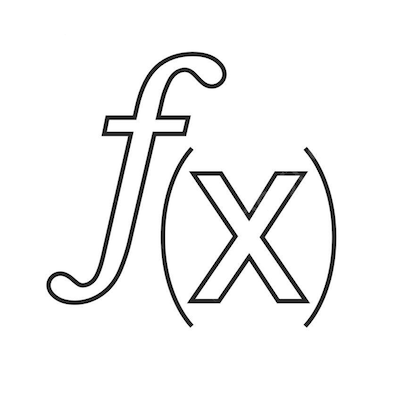🔬 Tutorial problems kappa \(\kappa\)#
Note
This problems are designed to help you practice the concepts covered in the lectures. Not all problems may be covered in the tutorial, those left out are for additional practice on your own.
\(\kappa\).1#
Find all of the first-order and second-order partial derivatives for each of the following functions.
(a) \(U=10 X^{0.6} L^{0.5}\);
(b) \(C=50 Y^{0.8} i^{0.3}\) (where \(i\) is a variable, not the imaginary number \(\sqrt{-1})\);
(c) \(C=10+2 Y^{0.9}+5 \sqrt{i}\) (where \(i\) is a variable, not the imaginary number \(\sqrt{-1}\));
(d) \(T C=100+5 X_{1}+6 X_{2}-0.2 X_{1} \sqrt{X_{2}}\);
(e) \(U=5 \ln \left(X_{1}\right)+2 \ln \left(X_{2}\right)\);
(f) \(Q=50 K^{0.7} L^{0.3}\);
(g) \(Q=A K^{\alpha} L^{1-\alpha}\);
(h) \(q_{1}=100 p_{1}^{-0.6} p_{2}^{0.4} \sqrt{Y}\);
(i) \(q_{2}=50 p_{1}^{-0.3} p_{2}^{-0.5}\); and
(j) \(\pi=-90+20 q_{1}^{2}+5 q_{2}^{2}-8 q_{1}-5 q_{1} q_{2}\).
This question comes from Shannon (1995, p. 501-502, questions 1 and 2 )
(a)
(b)
(c)
(d)
(e)
(f)
(g)
(h)
(i)
(j)
\(\kappa\).2#
Use the chain rule to find the following partial derivatives.
(a) \(\frac{d z}{d t}\) if \(z=F(x, y)=x^{2}+e^{y}\), where \(x=t^{3}\) and \(y=2 t\).
(b) \(\frac{d Y}{d t}\) if \(Y=F(L, K)=K L^{2}\), where \(L=f(t)\) and \(K=g(t)\).
(c) \(g^{\prime}(r)\) if \(g(r)=F\left(r, 1-r, \frac{1}{(1-r)}\right)\).
(d) \(\frac{d z}{d t}\) and \(\frac{d z}{d s}\) if \(z=F(x, y)\), where \(x=f(t)\) and \(y=g(t, s)\).
This question comes from the instructors manual for Sydsaeter et al (2016)
(a)
(b)
(c)
Let \(a(r)=r, b(r)=1-r\), and \(c(r)=\frac{1}{(1-r)}\). We will assume throughout that \(r \in(-\infty, 1) \cup(1, \infty)\). Since \(g(r)=F(a(r), b(r), c(r))\), we have
(d)
\(\kappa\).3#
Let \(D(p, m)\) indicate a typical consumer’s demand for a particular commodity, as a function of its price \(p\) and the consumer’s own income \(m\). Show that the proportion \(pD/m\) of income spent on the commodity increases with income if income elasticity of demand \(El_m D > 1\) (in which case the good is a “luxury”, whereas it is a “necessity” if \(El_m D < 1\)).
Since the good is “luxury”, we have
We wish to show that \(\frac{pD}{m}\) increases with income when the above holds; that is, to show that \(\frac{\partial}{\partial m} \left(\frac{pD}{m} \right) > 0\).
We know that \(\frac{m}{D} \frac{\partial D}{\partial m} > 1 \iff \left( \frac{m}{D} \frac{\partial D}{\partial m} - 1 \right) > 0\). We further assume that \(p, m > 0\) as these are price and income respectively, which typically don’t make sense with negative or zero values. Finally, we also assume that quantity demanded \(D > 0\), noting that if it were zero, it would not make sense to have it on the denominator of the partial elasticity calculation.
Thus we have
meaning that
which is what we wanted to show.
\(\kappa\).4#
In which direction should one move from a given point in order to increase the value of the function most rapidly:
\(\quad\) \(f(x,y) = 4x^2y\) from the point \((2,3)\)
\(\quad\) \(f(x,y) = y^2 e^{3x}\) from the point \((0,3)\)
Present your answer as a vector of length 1.
[Simon and Blume, 1994]: Exercises 14.18, 14.19
Review the definition and facts about the gradient of a multivariate functions.
The direction of most rapid ascent of the multivariate function is given by its gradient.
1.
We need to make sure that the direction vector had length 1, so we divide by its norm
The direction vector is then \((48, 16)/16\sqrt{10} = (3/\sqrt{10}, 1/\sqrt{10})\)
2.
We need to make sure that the direction vector had length 1, so we divide by its norm
The direction vector is then \((27, 6)/3\sqrt{85} = (9/\sqrt{85}, 2/\sqrt{85})\)
\(\kappa\).5#
Consider a function \(f : \mathbb{R}^N \ni x \mapsto x'Ax \in \mathbb{R}\), where \(N \times N\) matrix \(A\) is symmetric.
Using the product rule of multivariate calculus, derive the gradient and Hessian of \(f\). Make sure that all multiplied vectors and matrices are conformable.
You can assume that \(x\) is a column vector, and that any vector function of \(x\) is also a column vector.
A possible answer:
Represent the quadratic form as a dot product of two functions \(f(x) = x' A x = h(x) \cdot g(x)\), where \(h(x) = x\) and \(g(x) = A x\). Then \(Dh(x) = I\) (identity matrix) and \(Dg(x) = A\).
The last Jacobian can be easity derived by representing matrix multiplication as a linear combination of columns. Differentiating with respect to each element of \(x\) then yields a Jacobian composed of columns of matrix \(A\), therefore equal to it.
Applying the dot product rule of differentiation we have
The last transformation is transpose of a product + utilizing symmetry of \(A\).
The final answer is the \(1 \times N\) matrix (row vector)
\(\kappa\).6#
Compute directional derivative of \(f(x,y) = xy^2 + x^3y\) at the point \((4,-2)\) in the direction of the vector \((1/\sqrt{10},3/\sqrt{10})\).
Proceed in two different ways:
first, using the definition of the directional derivative, write down a function \(g \colon \mathbb{R} \to \mathbb{R}\) of \(h\) given as a slice of the original function \(f(x,y)\) through the given point in the given direction; then differentiate this function and compute the derivative at \(h=0\)
second, use the gradient formula; and verify that the same answer is obtained
[Simon and Blume, 1994]: Exercise 14.20
Follow the example in the lecture notes.
Denote \((x_0,y_0) = (4,-2)\), and \(v = (1/\sqrt{10},3/\sqrt{10})\).
Note that \(\|v\| = \sqrt{(1/\sqrt{10})^2+(3/\sqrt{10})^2} = (1+3^2)/10 = 1\).
First approach
Let \(g(h)\) denote the univariate function of \(h\) obtained by slicing the function \(f(x,y)\) through the point \((x_0,y_0)\) in the direction of the vector \(v\):
We have
Evaluating the last expression at the given \((x_0,y_0)\) and \(v\) we get
Second approach
Compute the partial derivatives and the gradient
